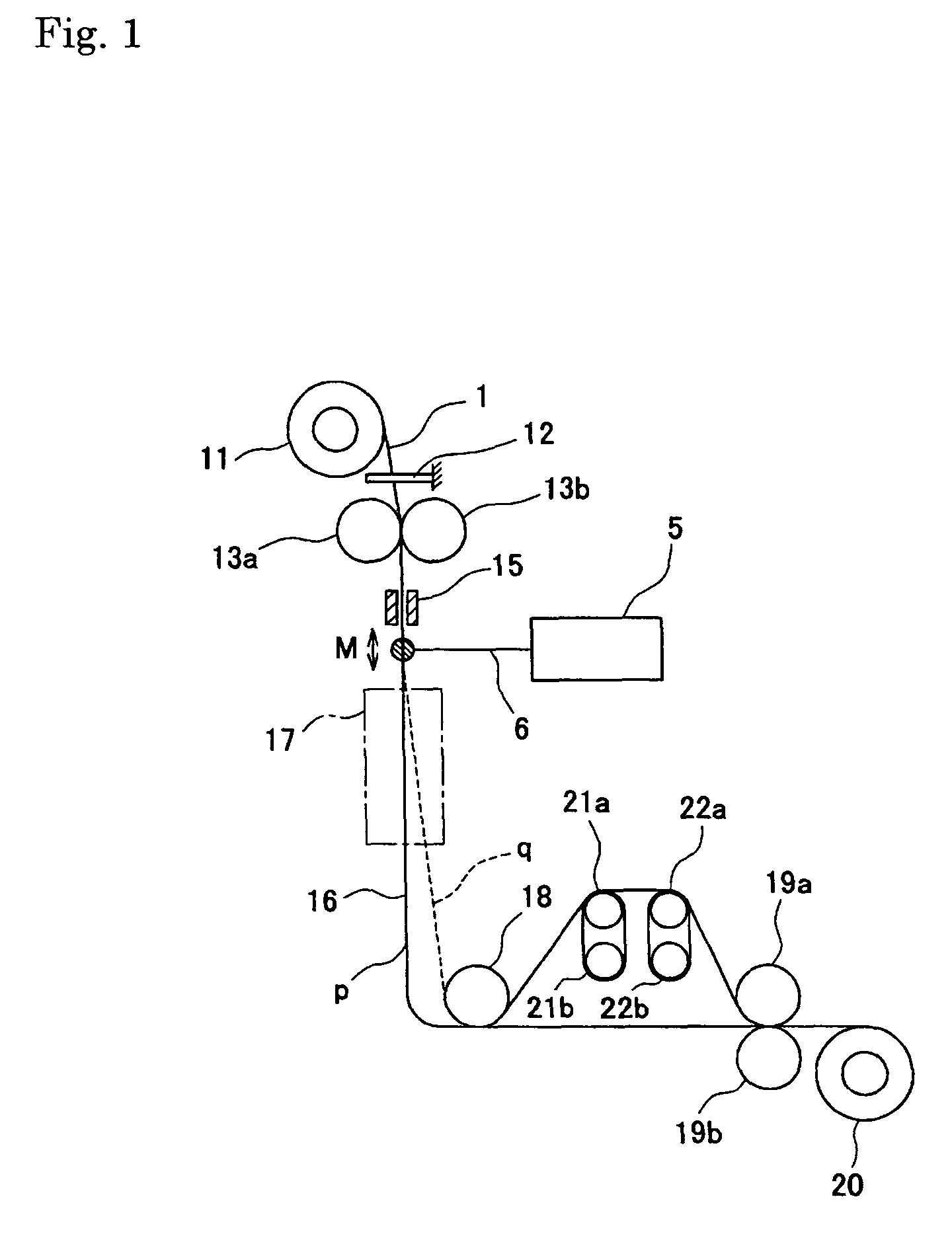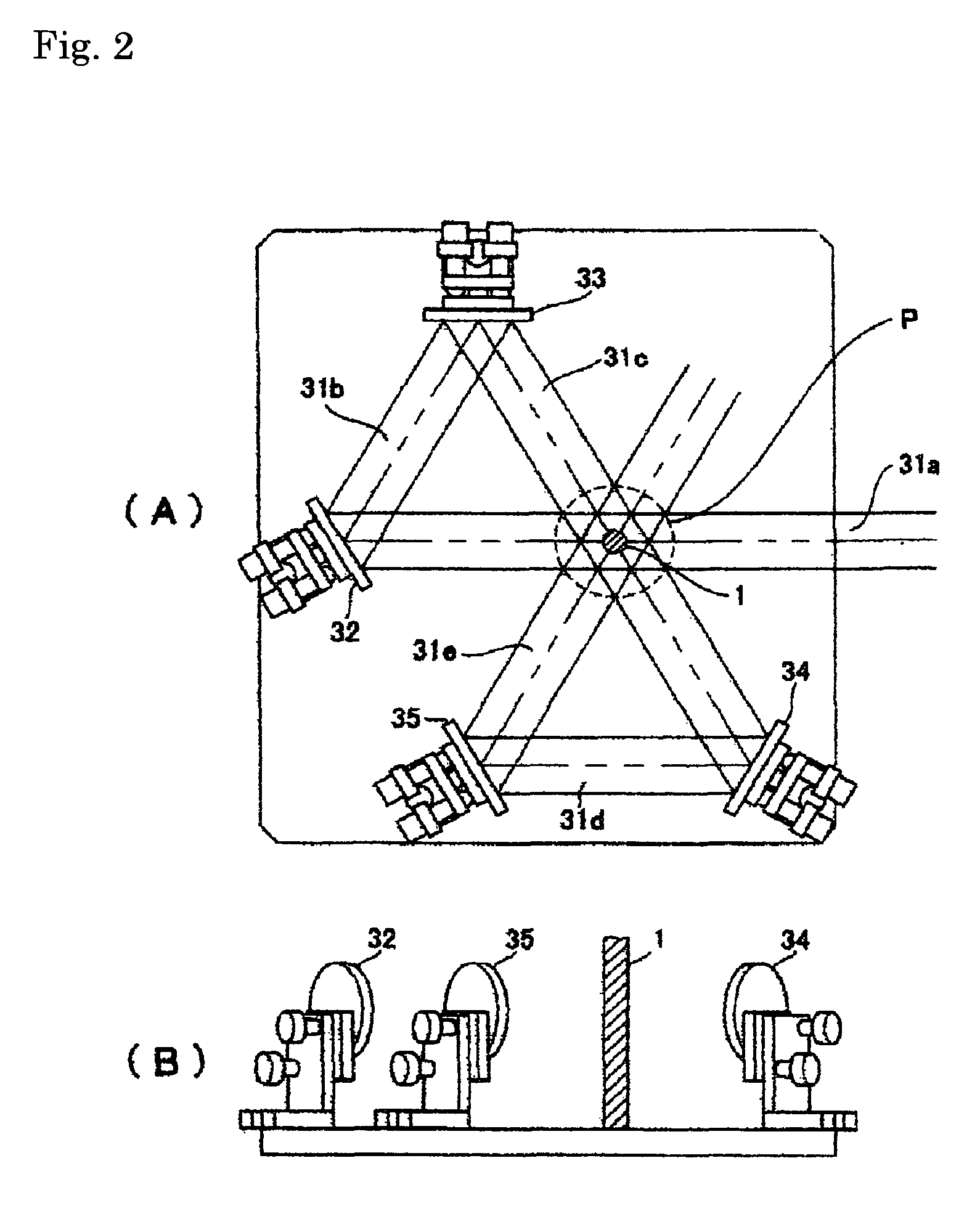Method of manufacturing a drawn biodegradable micro-filament
a biodegradable and micro-filament technology, applied in the direction of filament/thread forming, transportation and packaging, yarn, etc., can solve the problems of difficult to make fibers of small fiber diameters as a spinning property, poor drawing property, spoiled fiber properties, etc., to achieve easy to manufacture, high ratio, and simple and convenient means
- Summary
- Abstract
- Description
- Claims
- Application Information
AI Technical Summary
Benefits of technology
Problems solved by technology
Method used
Image
Examples
example 1
[0061]The un-drawn filament consisting of polylactic acid polymer (filament diameter: 75 μm, glass transition temperature: 57° C., crystallization temperature: 103° C., tensile strength: 55 MPa, birefringence: 0.063) were used as the original biodegradable filament. Using the original filament, drawing was conducted using the drawing apparatus of FIG. 1 and the mirror of FIG. 2 for an infrared emitter. The laser emitter in this time, a carbon dioxide gas laser emitter manufactured by Onizuka Glass Co., Ltd. with a maximum power of 10 W was used. A diameter of a laser beam at the time was 4 mm. Delivering this original filament at supply speed of 0.5 m / min and a laser power density being 24 W / cm2, and the experiments were conducted by changing wind-up speed. FIG. 7 shows filaments diameters of drawn filament obtained by the experiment, draw ratio calculated from filaments diameters, birefringence and X-ray orientation degree of drawn filament and values of the drawing tension obtaine...
example 2
[0062]An example when laser power density was made to 12 W / cm2 with the condition of Example 1 is illustrated in FIG. 8. From FIG. 8, a filament diameter is 5 μm or less, and the draw ratio is 100 times or more and has reached 500 times or more. In such a case, the draw ratio is within a range from 0.3 MPa to 2.7 MPa.
example 3
[0063]The filaments obtained by the method of Example 1 of the invention were conducted re-drawing and heat treatment according to a zone drawing method and a zone annealing method. The results are shown in FIG. 9. From FIG. 9, it is understandable that filaments are highly molecular orientated as the draw ratio has reached from 3900 times even to 15000 times and the birefringence has reached 0.030 or more, even 0.040 or more. And, also the filaments diameters are 3 μm or less and super micro-filaments of 2 μm are obtained.
PUM
| Property | Measurement | Unit |
|---|---|---|
| diameter | aaaaa | aaaaa |
| length | aaaaa | aaaaa |
| length | aaaaa | aaaaa |
Abstract
Description
Claims
Application Information
 Login to View More
Login to View More - R&D
- Intellectual Property
- Life Sciences
- Materials
- Tech Scout
- Unparalleled Data Quality
- Higher Quality Content
- 60% Fewer Hallucinations
Browse by: Latest US Patents, China's latest patents, Technical Efficacy Thesaurus, Application Domain, Technology Topic, Popular Technical Reports.
© 2025 PatSnap. All rights reserved.Legal|Privacy policy|Modern Slavery Act Transparency Statement|Sitemap|About US| Contact US: help@patsnap.com



